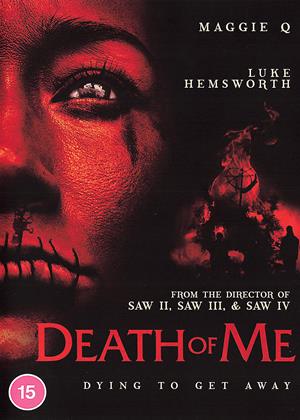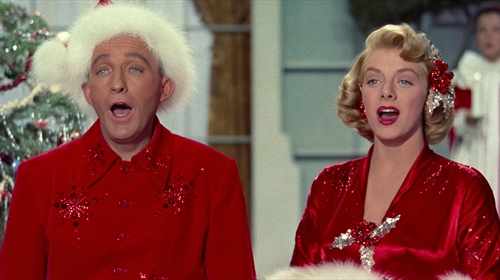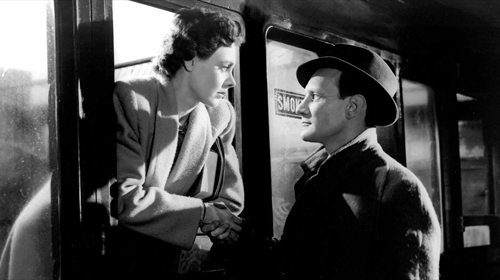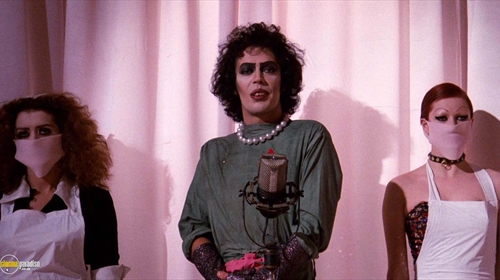Although it won't officially turn 50 until December, The Wicker Man is back in UK cinemas in a 4K restoration of The Final Cut. Cinema Paradiso reflects on the cult curio that became a horror classic.
Five decades after a special screening was held in the Scottish town of Newton Stewart to thank the locals who had helped make Robin Hardy's The Wicker Man (1973) possible, the same small venue hosted the premiere of the restored 4K version of the Final Cut. Christopher Lee, who amassed 288 credits in a peerless career considered it the best thing he had ever done. 'It's one of the most remarkable films ever made,' he claimed in a 1998 BBC documentary. 'It's not only amusing, it's romantic, erotic, very disturbing and very frightening.'

Yet, it's not a traditional horror in any way. There are no monsters or supernatural forces on the rampage. Moreover, there's no gore or shocks to make viewers jump out of their seats. Instead, it's a treatise on faith and human nature that asks audiences to reach their own conclusions about where morality lies.
Centred on a battle for supremacy between two believers who are utterly convinced of the rectitude of their convictions, The Wicker Man is unusual in that the character in peril is a man. But what's even more unique is that the protagonist is as utterly oblivious to his plight as those watching in the darkness.
In many ways, the story of a police sergeant who comes to a remote Hebridean island to investigate the disappearance of a missing girl feels close in tone to a war film in which a lone hero is parachuted into Occupied Europe. The twist, however, is that he can't find anyone connected to the Resistance because everyone has been so seduced by the ideology of their oppressor that these voluntary quislings blithely enjoy the benefits of unquestioning obedience.
David Bartholomew of the horror magazine, Cinefantastique, famously declared The Wicker Man to be 'the Citizen Kane of horror movies'. Orson Welles's 1941 first feature overcame a muted response to be hailed an undisputed masterpiece. But, while Robin Hardy's debut has its devoted adherents, it remains something of a Marmite movie.
Burning Curiosity
Having received a letter asking him to investigate the disappearance of a young girl, police sergeant and committed Christian Neil Howie (Edward Woodward) pilots a seaplane to the remote Hebridean island of Summerisle. None of the locals claims to have heard of Rowan Morrison, however, although the harbour master (Russell Waters) muses that a May Morrison (Irene Sunter) runs the sweet shop on the high street. He's certain, however, that the girl in the photograph that Howie shows him is not her daughter.
Taken aback by the phallic nature of some of the confectionery in the window. Howie calls on May. She concedes that Rowan is missing, but doesn't seem overly concerned. Neither does her sister, Myrtle (Jennifer Martin), who is painting a picture of a hare. Realising that he is going to have to stay overnight, Howie seeks out The Green Man and is put out when landlord Alder MacGregor (Lindsay Kemp) extends a lukewarm welcome and does nothing to stop the regulars from joining in a suggestive folk song about his daughter, Willow (Britt Ekland).
Engaged to be married on the mainland, Howie disapproves of Willow's flirtatiousness as she serves him supper. But, when he goes for a stroll before bedtime, he is genuinely appalled to see a naked woman wrapping herself around a gravestone and other couples openly copulating. His mood is scarcely improved when he overhears Lord Summerisle (Christopher Lee) delivering a young man for Willow to deflower. But Howie feels he has stumbled across a clue, as the most recent harvest festival photograph is missing from the pub wall and he doesn't buy the landlord's assertion that it got smashed.
Next morning, Howie goes to the school to make enquiries. Having witnessed a male teacher (Walter Carr) leading some children in a bawdy song at the maypole, he walks in on Miss Rose (Diane Cilento) giving a lesson about male genitalia to an all-girl class. Howie expresses his dismay at the unseemliness of the subject matter. But he loses his temper when the students deny any knowledge of Rowan, even though her name is in the register. When he opens the lid of her desk, he jumps back at the sight of a tethered beetle circling a nail driven into the wood and snaps at Daisy (Leslie Mackie) for being so ghoulish.
Confiding that Rowan has a grave, Miss Rose cautions Howie about prying into matters he doesn't understand. But he is supremely confident in his power as a policeman and strides to the ruined church. Saddened to see a place of Christian worship in such a state because paganism runs amok, Howie fashions a cross from some wood before questioning a gardener (Aubrey Morris) about Rowan's burial place. Furious at finding an umbilical chord dangling from a sapling, Howie returns to town to confront May.
Dissatisfied with her answer, he goes to the library in search of a death certificate. The librarian (Ingrid Pitt) frustrates him with her evasiveness and he reminds her that Summerisle isn't beyond the law. Running out of patience, Howie calls on Lord Summerisle and complains about the naked girls jumping over a flame while performing a fertility rite. However, his host jokes that it makes more sense to leap fire without clothing. He also mocks Howie's attack on paganism by reminding him that he worships 'the son of a virgin, impregnated, I believe, by a ghost'.
Howie questions Summerisle's right to rule over the island and he explains how his grandfather, a noted Victorian agronomist, had founded the colony as an escape from the corruptions of daily life. He is proud of how his neighbours co-operate for the greater good and extols the virtues of freedom of belief and love, which have enabled everyone to fulfil their potential. Nevertheless, Summerisle gives Howie permission to open Rowan's grave and he is livid to discover that it contains nothing but a brown hare.
Miss Rose is at the big house when Howie confronts Summerisle. But he dismisses the policeman's concerns. Back at The Green Man, Howie resists Willow's attempts to seduce him with a naked dance in her next-door room. But his mind is focussed on the task in hand, as he believes that Rowan has been abducted and will be sacrificed on May Day in a bid to appease the gods in the hope of getting a bountiful apple harvest after the previous year's failure.
As the islanders prepare their costumes for the ceremonial, Howie conducts a house-to- house search for Rowan. However, he changes his plan when he hears Willow and her father discussing his Mr Punch costume. Knocking Alder cold, Howie dons his disguise and joins the procession snaking across the island behind a cross-dressed Summerisle, certain that it will lead him to Rowan and a heroic rescue.
Cinema Is Icumen In

Playwright Anthony Shaffer was on a cinematic roll in the early 1970s. Having debuted charmingly by teaming John Hurt and Hayley Mills in Mr Forbush and the Penguins (1971), which was co-directed by Arne Sucksdorff, Alfred Viola, and Roy Boulting, he scored substantial hits with Alfred Hitchcock's first British film for 22 years, Frenzy, and Joseph L. Mankiewicz's Sleuth (both 1972), which earned Oscar nominations for co-stars Laurence Olivier and Michael Caine. Each feature was cunningly plotted, with the latter having a surprise ending that few saw coming.
Shaffer would tag something similar on to the end of his script for The Wicker Man, which was inspired by a 1967 David Pinner novel entitled, Ritual. Indeed, Pinner had originally envisaged his scenario as a project for Michael Winner and John Hurt. When Winner rejected the script, however, Pinner's agent advised him to redraft it as a novel. Taken with the story of a Christian policeman investigating a girl's death in pagan Cornwall, Shaffer approached Robin Hardy, his partner in an advertising firm, about reworking it as a feature set in a Scottish island.
Word of the project reached Christopher Lee, who had grown tired of Hammer-style horror and wanted 'do a film without women who look like Barbara Windsor running up and down papier-maché corridors screaming'. He and Shaffer bought the rights to Ritual for £15,000 and the latter started researching folklore, using tomes like Scottish anthropologist James George Fraser's The Golden Bough.
Shaffer named Summerisle's sun god Nuada after a king from Celtic mythology, while the sword rite in the climactic procession was borrowed from a Morris dance. The character of Punch derived from the Tudor tradition of the Lord of Misrule. But it was only when read about wicker men in Julius Caesar's Commentaries on the Gallic War and saw a gruesome illustration that Shaffer hit upon the notion of a human sacrifice. He would later claim that the description of people being burned alive in giant wooden figures was 'the most alarming and imposing image that I had ever seen'. He also described his concoction as 'a very nasty little plot indeed'.
Equally keen to produce a literate horror that eschewed gore and cheap jolts, Peter Snell of British Lion came aboard and agreed to Hardy as director. Despite Lee's attachment, neither Michael York nor David Hemmings fancied playing Sgt Howie and the role went to Edward Woodward, who was best known for his muscular lead in the ITV MI5 series, Callan (1967-72).
Willow, the landlord's daughter, was offered to Britt Ekland, the Swedish model who had acted alongside husband Peter Sellers in Vittorio De Sica's After the Fox (1966) and Robert Parrish's The Bobo (1967). More recently, she had impressed in Mike Hodges's Get Carter (1971) and Sidney Gilliat's Agatha Christie adaptation, Endless Night (1972), which had reunited her with Hywell Bennett from Ralph Thomas's raunchy comedy, Percy (1971).
Ekland had also appeared in Roy Ward Baker's Asylum (1972). But she was a horror novice compared to Ingrid Pitt, who had survived the Polish Holocaust as a girl and made her way to the United States as a GI bride. Although she had caught the eye with minor roles in David Lean's Doctor Zhivago (1965) and Brian G. Hutton's Where Eagles Dare (1968), it was Hammer outings like Ward Baker's The Vampire Lovers (1970) and Peter Sasdy's Countess Dracula (1971) that made her a star. However, Pitt was sufficiently intrigued by The Wicker Man to take the modest role of Summerisle's librarian-cum-registrar.
Australian Diane Cilento had come to Britain in the early 1950s to study at RADA. Producer Alexander Korda had teamed her with compatriot Peter Finch in Roy Ward Baker's Passage Home (1955), but she found fame in the title role of Alan Bromly's fantasy, The Angel Who Pawned Her Harp (1956). Type her name into the Cinema Paradiso searchline to discover Cilento's credits either side of a Best Supporting Actress nomination for Tony Richardson's bawdy Oscar-magnet, Tom Jones (1963).

Having married Sean Connery in 1962, however, Cilento only made occasional appearances in the likes of Carol Reed's The Agony and the Ecstasy (1965) and Martin Ritt's Hombre (1967). Having separated from Connery, however, she was keen to emerge from semi-retirement and agreed to play schoolteacher, Miss Rose.
The early 1970s was a dire time for the British film industry and British Lion had been acquired by Barclay Securities. As CEO John Bentley had a reputation for asset stripping businesses, he urged Hardy to start shooting in the October 1972 in order to convince the unions that he wasn't about to close the company down. This meant that production designer Seamus Flannery had to find tons of plastic apple blossom to stick to the trees to give the impression that the action was taking place in high spring.
So tight was the budget that Lee agreed to work for nothing. Several locals were cast in minor roles and as extras, as the production shuttled between 25 different locations around Scotland. The views from Sgt Howie's plane, however, were filmed in South Africa in order to convey the spring feel, although some shots depict the Isle of Skye. Culzean Castle in Ayrshire provided the exterior of Lord Summerisle's imposing home, while The Ellangowan Hotel in Creetown stood in for The Green Man. The most notorious scene, however, took place on Burrow Head in Wigtownshire, where the stumps of the wicker man remained visible until they were stolen by souvenir hunters in 2006.
Apparently, Edward Woodward hadn't seen the towering structure in advance and the camera caught his genuine look of apprehensive awe. Perhaps recalling Hardy joking with locals that he planned to immolate 'pandas, fluffy Chihuahuas, and other cuddly creatures', Britt Ekland has since insisted that some of the livestock that joined the actor in the framework actually perished during the shoot. Hardy, however, was adamant that no animals were harmed, although he did admit that a goat kept urinating on the crew while they filmed some close-ups.
Ekland's pride was certainly hurt, as she resented the fact that her efforts to master a Scottish had all been in vain, as her dialogue was delivered by jazz singer, Annie Ross. Rachel Verney is also credited with providing Willow's singing voice. Yet editor Eric Boyd-Perkins recalls that only the song was dubbed. The pregnant Ekland also took umbrage at the fact that the lower half of Willow's naked body during the frantic seduction dance belonged to Lorraine Peters, a Glasgow go-go dancer who had been recruited by choreographer Stuart Hopps. Peters also played the nude woman pleasuring herself on a gravestone, although some aver that Jane Jackson was also present during the shooting of the dance scene, perhaps as Ekland's blocking stand-in. Rumours later spread that rock singer Rod Stewart had tried to buy the negative in order to spare the blushes of his then girlfriend.
On-set recollections note that Ekland and Cilento spent much time complaining about their ex-spouses, with the latter stating that Connery had been physically abusive. Ingrid Pitt also recalls a barefooted Woodward asking if he could warm his toes inside her skirt while they were filming the wicker man sequences on a cold autumn day. He later went on record as saying, 'I've done an awful lot of things in the years since that picture was made, but never, ever have I been so frightened as when I was in the wicker man itself. It was horrifying. The heat was intense and I felt at times that I was really burning.'
Off duty drinking sessions did little to improve the location mood, with cinematographer Harry Waxman wondering why they were all wasting their time. Hardy and Shaffer fell out over the former's directing style and barely spoke again. They concurred, however, on the significance of the folk songs that have led some critics to call The Wicker Man a horror musical. A song score had also proved crucial to Donald Cammell and Nicolas Roeg's Performance (1970) and New Yorker Paul Giovanni was commissioned to pen tunes to accompany the opening flight, various scenes at The Green Man, the maypole dance, and the fire leap. At Shaffer and Hardy's insistence, these drew heavily on the findings of Cecil Sharp, whose song collecting had inspired the folk revival movement. The opener, 'Corn Riggs', however, was based on a poem by Robert Burns, while the pyre finale was accompanied by the mid-13th-century ballad, 'Summer Is Icumen In'. All 13 tracks were recorded by an impromptu band named Magnet, which included associate musical director Gary Carpenter. The soundtrack was included in the four-disc 40th anniversary reissue, which also offered interviews with Hardy and Lee, as well as a trio of documentaries and all three versions of the film.
Diced, Dumped, and Rediscovered

Such were British Lion's woes that it had been sold to EMI by the time the shoot ended. New controller Michael Deeley is often portrayed as something of a Philistine by Wicker Man aficionados. Yet, he has a decent record as a producer, having unleashed Peter Sellers and Spike Milligan in Joseph Sterling's The Case of the Mukkinese Battle Horn (1961), which can be rented from Cinema Paradiso on Volume 2 of The Renown Comedy Collection. Furthermore, Deeley had co-produced Peter Yates's Robbery (1967) and Peter Collinson's The Italian Job (1969) and would go on to guide Nicolas Roeg's The Man Who Fell to Earth (1976), Michael Cimino's The Deer Hunter (1978), and Ridley Scott's Blade Runner (1982).
It's safe to say, however, that Deeley and partner Barry Spikings didn't get The Wicker Man. Deeley found the ending excessively depressing and suggested a sudden downpour to deliver Howie from his fate. On emerging from a special screening, Lee was appalled when Deeley declared Hardy's effort, 'one of the 10 worst movies I have ever seen'. Deeley considers Lee's claim to be 'absolute nonsense', however. 'I never said that,' he told critic Mark Kermode. 'I don't think it's one of the 10 worst films I've ever seen. I've made worse films than that myself. I thought it was fascinating and genuinely ahead of its time. But it was also rather indulgent, and very difficult for an audience.'
Hardy and Shaffer remember things Lee's way, with the latter noting that EMI's marketing people felt the picture was 'unsaleable'. However, Shaffer believed the new regime was simply flexing its muscles. 'There was a general policy,' he suggested, 'that you trash or abandon the films of your predecessors to show how much better you are. Their reaction was sheer disbelief. They were used to On the Busses and Carry On.'
Stumped as how best to proceed, Deeley sent a print to Hollywood exploitation maestro Roger Corman in the hope he would come up with some suggestions to make the action more appealing. As it had been decided to release The Wicker Man on the lower half of a double bill with Nicolas Roeg's Don't Look Now (1973), Boyd-Perkins was asked to make 12 minutes of cuts to bring the running time down to 87 minutes. In addition to removing scenes on the mainland, the editor also limited Howie's stay on the island to a single night and removed a chunk of his encounter with Lord Summerisle.
Furious that the edits had damaged the story's logic, Lee decided to take matters into his own hands on discovering that The Wicker Man was going to be launched without any press shows or publicity after a test screening at the Metropole Cinema in December 1973. 'I was horrified,' he recalled, 'and I did something I've never done before or since. I rang up all the critics I could think of and said, "Look, I'll pay for your seats if that's what it takes, but just please go and see this film as a favour to me."'
Eventually, EMI moved the film to the Odeon Haymarket, but withheld it from the provinces. It also placed a large replica wicker man on the beach at Cannes during the 1974 festival. But there were no overseas takers, in spite of the picture taking the Golden Licorn at the Paris International Festival of Fantastic and Science-Fiction Film. Having failed to impress Corman, EMI sold the American rights to National General, only for it to go bankrupt. Warner Bros acquired their catalogue and sought drive-in bookings. However, following a handful of desultory screenings in San Diego and Atlanta, the studio wrote off The Wicker Man as a tax loss.
Crestfallen at the shoddy treatment of his debut, Hardy wrote to Peter Snell. 'Do you have any idea how lonely this film was for me?', he began. 'No one on the set knew what it was about, nor cared, and my daily diet of disdain from the camera department, from the production and design department, you know, I tolerate it because a director must get used to these things. But the fact is, we've got to the edit with this beautiful script intact, this incredible music intact, and you're telling me now that British Lion wants to gut it and slice it? Well, I've gone too far to let this go quietly.'
In 1976, Hardy decided to restore the film to its original length. Consequently, he started searching the archives at British Lion, National General, and Warner Bros, only to learn that the negative, as well as the trimmed footage had been used as roadfill during the construction of the M3 motorway near Shepperton Studios. Peter Snell later told journalists, 'I suspect the negative was, quite innocently, taken away with the positive trims and dumped.' Boyd-Perkins was equally disconsolate. 'I knew the vault-keeper,' he said in the same Guardian report, 'and I went down when I heard these stories and he said "It was a genuine mistake, I was horrified when it happened."'
Lee suspected foul play, however. 'I don't know whether instructions were given to destroy it,' he complained, 'or to hold it somewhere under another name, but I believe that the negative still exists.' He went on: 'Every studio keeps the negatives and trims of every film it makes, good, bad or indifferent. How do you destroy 386 cans of film "by mistake"? That's in the realms of fantasy. Something very strange is going on here. I firmly believe those negatives do exist, either in cans bearing the label of another film, or with no label at all. But somebody still knows where those cans are, and they should hand it over to us to re-cut, and we could really make a work of genius.'
Fortunately, Hardy found the copy that had been sent to Corman in 1973. This was the original 99-minute cut (the fabled 102-minute version never existed, as distributor John Simon had simply mistimed it). As Warners had sold the distribution rights to a small company called Abraxas, they encouraged Hardy to restore the pre-title sequence of Howie reading the lesson at church, as well as some of the more erotic material and the interview with Dr Ewan (John Sharp), who took the harvest festival photographs. The result was a Director's Cut, which was released at 96 minutes in January 1979.
When Media Home Enterainment issued a video version in the 1980s, scenes set at Howie's police station took the running time to 99 minutes. They remained in place when Canal+ its new edition in 2001, which had to rely on a telecine transfer to one-inch videotape because the Corman copy had also now gone missing. But any suggestion that a definitive print could ever be achieved was dispelled by Allan Brown in his magnificent book, Inside The Wicker Man (2005), which contains stills detailing more mainland scenes, as well as a confrontation in The Green Man and an intimate episode involving Howie and Willow.
Still fighting the film's cause in March 2002, Lee told an interviewer: 'I still believe it exists somewhere, in cans with no name. I still believe that. But nobody's ever seen it since, so we couldn't re-cut it, re-edit it, which was what I wanted to do. It would have been ten times as good.' Acting on Lee's conviction, StudioCanal launched a search for the lost material in 2013 and discovered a 92-minute copy at the Harvard Film Archive. This so-called 'Middle Print' had been assembled from a 35mm version of Hardy's original cut. However, he went to his grave convinced that the first version had vanished. 'Sadly,' he said, 'it seems as though this has been lost forever. However, I am delighted that a 1979 Abraxas print has been found as I also put together this cut myself, and it crucially restores the story order to that which I had originally intended.'
Running 94 minutes, The Wicker Man: The Final Cut is shorter than the Director's Cut but longer than the Theatrical Cut. This is the version currently in UK cinemas, while Cinema Paradiso users can access an 84-minute cut. But watch this space for details of the forthcoming 4K release.
Fifty Years and Counting
Although no critics accepted Christopher Lee's offer of a free ticket, a few paid to see The Wicker Man of their own volition and were generous in their praise. Variety hailed the screenplay, as its 'sheer imagination and near-terror has seldom been equalled', while the BFI's Monthly Film Bulletin declared it 'an immensely enjoyable piece of hokum'. But it would be a later generation that would recognise it as a cult item and, then, a bona fide classic.

Gradually, the film's influence began to exert itself, just as it had been shaped by such prototype folk horrors as Michael Reeves's Witchfinder General (1968) and Piers Haggard's The Blood on Satan's Claw (1971). It's showing on the television in Roger Avary's Killing Zoe (1993), while Ewan McGregor watches the final scene in Danny Boyle's Shallow Grave (1994). Eighteen years later, Boyle would slip a reference to the film into the Opening Ceremony of the 2012 London Olympics, which features in Caroline Rowland's official documentary, First (2012).
A snatch of 'Willow's Song' can be heard in Alejandro Amenábar's Open Your Eyes (1997), while a variation on it plays in Eli Roth's Hostel (2005). Sinister communities are to the fore in Peter Sasdy's Nigel Kneale-scripted teleplay, The Stone Tape (1972), M. Night Shamalayan's The Village (2004), Edgar Wright's Hot Fuzz (2007), Ti West's The Innkeepers (2011) and The Sacrament (2013), Gareth Evans's Apostle, and Ari Aster's Hereditary (both 2018) and Midsommar (2019).
Echoes can also be heard in such small-screen favourites as League of Gentlemen (1999-2017) and Inside No.9 (2014-), as well as Broadchurch (2013-17). Moreover, allusions abound in the likes of Bernard Rose's Candyman (1992), Tomas Winding Refn's Bleeder (1999), Ben Stiller's Zoolander (2001), Roger Avary's The Rules of Attraction (2002), James Wan's Saw (2004), Joe Lynch's Knights of Badassdom (2013), Joel Potrykus's Buzzard, Luke Hyams's X Moor (both 2014), and Darren Lynn Bousman's Death of Me (2020). Get clicking and see if you can spot the homages.
There's even a joke in Mark Andrews's Pixar gem, Brave (2012), as one of the witches leaves Merida a note saying she's gone to the Wicker Man Festival on Summerisle. Hopefully coming to disc sometime soon, The Third Day (2020) also revealed its debts by setting its three episodes on an island off the British mainland, where pre-Christian beliefs prevail. Numbering Brad Pitt among its producers, this scary series featured the likes of Jude Law, Emily Watson, Naomie Harris, and Paddy Considine.
Despite the impact his film had, Shaffer had no takers when he wrote a 30-page sequel treatment in 1989, entitled The Loathsome Lambton Worm. The story starts with Howie being rescued by his colleagues and turns around his bid to bring Lord Summerisle and his followers to justice. However, the power of the pagan gods proves too strong and Howie proves no match for a fire-breathing dragon. Hardy was not invited to direct, but the premise didn't appeal to any UK producers, who would doubtless have been mindful of the cost of creating a convincing monster.
A fan-led audio version was eventually recorded in 2020, by which time a Wicker Man roller coaster had opened at Alton Towers. Costing £16 million to build, the wooden structure incorporates a giant effigy that bursts into flames when the train passes through. The ride remains popular for anyone in the Staffordshire area over the summer.
There's little likelihood that anyone will base a theme park ride around Neil LaBute's The Wicker Man (2006), however. Relocating the action to an island in Puget Sound in the Pacific Northwest, LaBute sent policeman Edward Malus (Nicolas Cage) in search of Rowan, the daughter of his ex-fiancée, Willow Woodward (Kate Beahan). While she seems pleased to see him, other residents are less welcoming, including tavern keeper, Sister Beech (Diane Delano), waitress Sister Honey (Leelee Sobieski), teacher Sister Rose (Molly Parker), and Doctor Moss (Frances Conroy). However, Malus realises the truth of his situation after meeting Sister Summersisle (Ellen Burstyn).

While this reworking was mauled by the critics, Hardy's The Wicker Tree (2011) was also coolly received. He had only completed one feature, The Fantasist (1986), although he did script Zelda Barron's The Bull Dance (1989). However, he remained keen to return to Scotland to make The Riding of the Laddies, which would again riff on pagan lore. Christopher Lee was up for starring, while Vanessa Redgrave, LeeAnn Rimes, and Ewan McGregor were linked with roles. But Hardy failed to secure funding and novelised the scenario as Cowboys For Christ, which became the basis for The Wicker Tree.
Unfortunately, Lee damaged his back in New Mexico, while shooting Antii Jokinen's The Resident (2011) for Hammer. Consequently, Graham McTavish took over as the laird of the Lowland village of Tressock, while Brittania Nicol and Henry Garrett were cast as the born-again country singer and her virginal fiancé, who accept an invitation to witness the May Day celebrations.
Lee took a flashback cameo and sparked a debate about whether he was reprising the role of Lord Summerisle. But only die-hards paid to see the picture and Hardy turned his attention to redrafting The Wicker Man as a graphic novel. As negotiations with artists progressed, he started writing a new screenplay. However, The Wrath of the Gods remained unfinished when Hardy died at the age of 86 on 1 July 2016.
He outlived Shaffer by 15 years. Working on Anthony Page's Absolution (1978) in between the Agatha Christie trio of Sidney Lumet's Murder on the Orient Express (1974), John Guillermin's Death on the Nile (1978), and Michael Winner's Appointment With Death (1988), he quit cinema after taking a story credit for Jon Amiel's Sommersby (1993), which reworked Daniel Vigne's French classic, The Return of Martin Guerre (1982). Shaffer had relocated to Australia in 1975 and married Diane Cilento, who would survive him by a decade after having battled a claim made on his estate by artist lover JoJo Capece Minutolo.
Hardy's private life was also rather chequered. He had eight children by five wives, with director Justin Hardy having mixed feelings about his father's masterpiece. 'I was nine at the time,' he recalled, 'and I only ever saw that film as a bad pagan omen. That was when I lost my father and my home.' Having struggled for money throughout production, Hardy had been grateful for handouts from his wife. However, she never received any repayment, as the film flopped. Moreover, she had to sell her house after Hardy left her for another woman and relocated in North America.

After enduring a tough upbringing, Justin wanted nothing to do with the movie that had caused all the trouble. Nevertheless, he followed in his father's footsteps, even working with Christopher Lee on A Feast At Midnight (1994). Sadly, this is not available to rent, which is all the more frustrating as Tory MP Michael Gove plays the school chaplain. But Cinema Paradiso users do have access to Hardy's contributions to the TV series Hope and Glory (1999-2000), Burnside (2000), City of Vice (2008), and The Halcyon (2017), as well as the features The Last Dragon (2004) and Love Me Till Monday (2013). His best work, however, is rooted in history, so we heartily recommend A Harlot's Progress (2006), The Relief of Belsen (2007), 1066 (2009), The Man Who Crossed Hitler (2011), and 37 Days: The Countdown to World War I (2014).
When the old family home was recently put up for sale, the owner contacted Hardy over a sizeable archive of material relating to The Wicker Man that she had found in the attic. As he explained, 'She wrote to me saying, "Do you want any of this - or shall I just burn it?"' The irony of her enquiry was not lost on Hardy and he took delivery of six sacks of letters, script pages, and test recordings that gave him a new insight into the ordeal his father had experienced in making his debut. He is now piecing the story together with his half-brother Dominic for a documentary to be entitled Wickermania!
May Day 2023 saw fire consume another Wicker Man at Burrow Head. At 15ft, it was a quarter of the size of its predecessor, but artist Amanda Sunderland was an apt choice to for the job, as her father, Ian, had answered an advertisement for extras with his two brothers back in 1972. He can be seen dancing in antlers in the procession.
Judging by the number of tourists who flock to the Scottish locations each year, the film's cult is still thriving. Christopher Lee believed this was because 'there is a touch of paganism in all of us insofar as we do all depend on the elements, which have been there since the dawn of time'. Anthony Shaffer even looked forward to the return of paganism. 'We'd have a much better time of it,' he opined. 'I think we'd have a lot more fun, a lot more belief, a lot more faith, and a lot more immediacy with the things unseen.' Robin Hardy concurred, confessing that 'the idea that that this rather happy, singing, loving society could come back and the only price was that we had to burn the occasional policeman sounds pretty good'. He was joking, of course. Wasn't he?

-
Went the Day Well? (1942)
 1h 28min1h 28min
1h 28min1h 28minSurvival at any cost is a key theme of The Wicker Man and it's shared by Alberto Cavalcanti's adaptation of Graham Greene's short story, 'The Lieutenant Died Last'. Given this account of how the residents of Bramley End resisted a Nazi invasion over the Whitsun weekend, the action is audaciously subversive, as a sleepy village rouses itself to overcome adversity after the vicar is killed trying to raise the alarm by ringing the church bells and the local squire shows his true colours.
- Director:
- Alberto Cavalcanti
- Cast:
- Leslie Banks, C.V. France, Valerie Taylor
- Genre:
- Drama, Classics, Action & Adventure
- Formats:
-
-
The Punch and Judy Man (1963) aka: The Punch & Judy Man
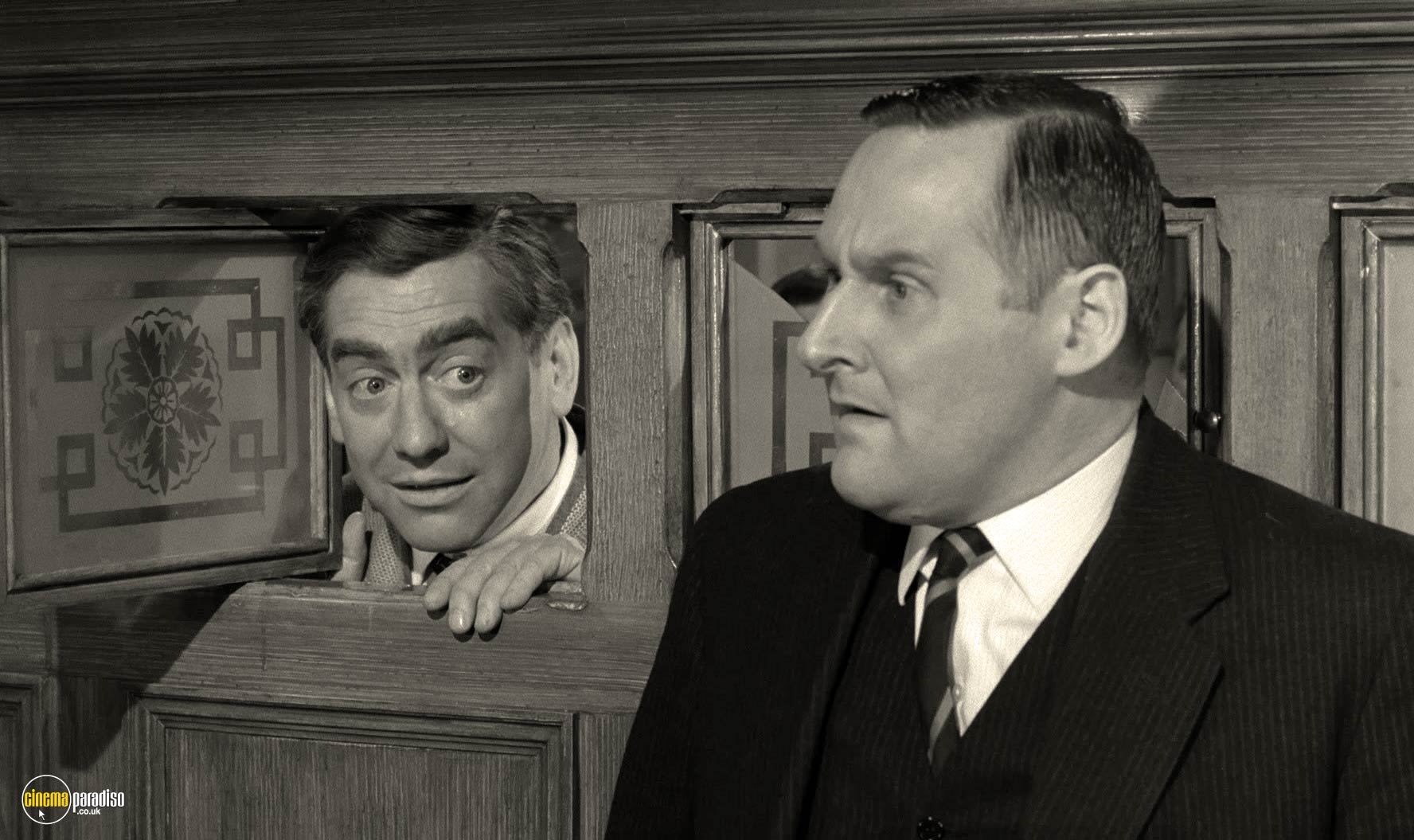 Play trailer1h 33minPlay trailer1h 33min
Play trailer1h 33minPlay trailer1h 33minSergeant Howie hopes to rescue the child he believes is imperilled by donning the Punch costume and joining the May Day procession. While Howie clings to his beliefs, Wally Pinner (Tony Hancock) has lost faith in everything, as he performs his Punch and Judy shows with little enthusiasm to small audiences on the seafront at Piltdown. However, he and fellow entertainers, The Sandman (John Le Mesurier) and Nevil Shanks the photographer (Mario Fabrizi) retain an independent spirit that annoys the progressive mayor (Ronald Fraser).
- Director:
- Jeremy Summers
- Cast:
- Tony Hancock, Sylvia Syms, Ronald Fraser
- Genre:
- Comedy, Classics
- Formats:
-
-
The Prisoner: Series (1967) aka: Nummer 6
 Play trailer14h 10minPlay trailer14h 10min
Play trailer14h 10minPlay trailer14h 10minThere's a distinct similarity between Summerisle and The Village in this cult TV series. While Sergeant Howie voluntarily flew to the Hebrides, however, the unnamed agent who comes to be known as Number Six (Patrick McGoohan) was abducted and deposited in a room identical to his own in a community in which everyone seems to live contentedly. As various adversaries called Number Two strive to elicit information, Number Six seeks to escape from the seemingly secure compound. The exteriors were filmed in the charming Welsh village of Portmeirion.
- Director:
- Don Chaffey
- Cast:
- Patrick McGoohan, Angelo Muscat, Peter Swanwick
- Genre:
- TV Sci-Fi & Fantasy, TV Dramas, TV Classics, TV Mysteries, TV Action & Adventure
- Formats:
-
-
Children of the Stones (1977) aka: Los chicos de Stone
 3h 7min3h 7min
3h 7min3h 7minJust as folk music was crucial to establishing the ambience on Summerisle, so the chants composed by Sidney Sagar and performed by the Ambrosian Singers help create the sense of unease that permeates this outstanding children's series from director Peter Graham Scott. Milbury seems an idyllic backwater when scientist Adam Brake (Gareth Thomas) and his son, Matthew (Peter Demin), come to investigate the megalithic stone circle that surrounds it. But they soon discover that the village is in the grip of the sinister squire, Hendrick (Iain Cuthbertson).
- Director:
- Peter Graham Scott
- Cast:
- Gareth Thomas, Veronica Strong, Peter Demin
- Genre:
- TV Dramas, TV Classics, TV Mysteries
- Formats:
-
-
An American Werewolf in London (1981)
 Play trailer1h 33minPlay trailer1h 33min
Play trailer1h 33minPlay trailer1h 33minEchoes of Sergeant Howie's welcome at The Green Man can be felt when New York backpackers David Kessler (David Naughton) and Jack Goodman (Griffin Dunne) wander into The Slaughtered Lamb in the Yorkshire moor village of East Proctor in John Landis's classic horror comedy. Among the regulars looking up menacingly is a young Rik Mayall, who is playing chess with the joke-telling Brian Glover. No wonder the visitors choose not to ask about the pentangle on the pub wall. Landis made his directorial debut with another comic chiller, Schlock (1973).
- Director:
- John Landis
- Cast:
- David Naughton, Jenny Agutter, Joe Belcher
- Genre:
- Horror, Comedy
- Formats:
-
-
The Fantasist (1986)
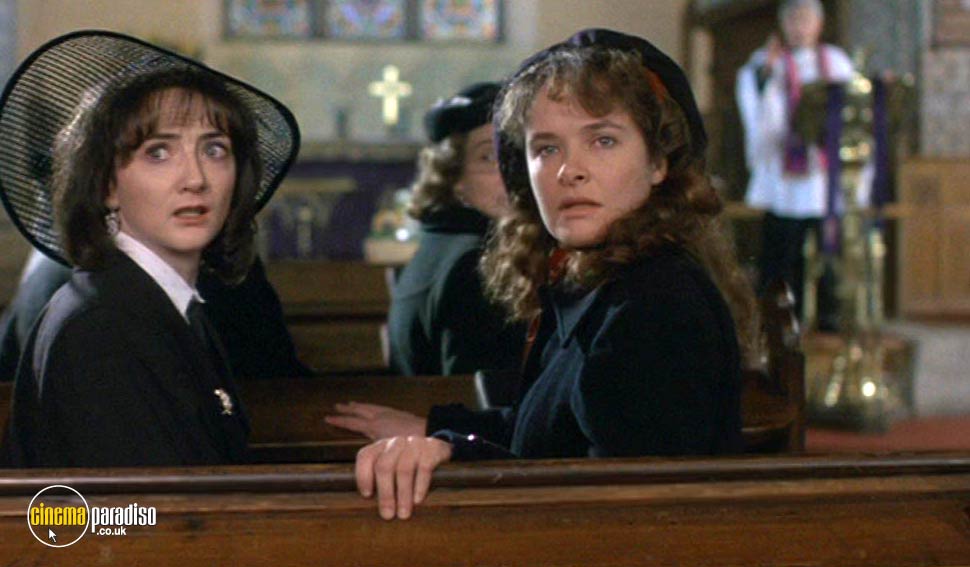 1h 34min1h 34min
1h 34min1h 34minFarm girl Patricia Teeling (Moira Harris) moves to Dublin to become a teacher. She shares a rooming house with American charmer Danny Sullivan (Timothy Bottoms) and befriends staffroom colleague Robert Foxley (John Kavanagh). However, there's a serial killer on the loose, who phones his victims and entices them off their guard with a mix of sweet talk and smut. When Patricia receives a call, she is contacted by Inspector McMyler (Christopher Cazenove). But who can she really trust in Robin Hardy's teasing, but little-seen sophomore feature?
- Director:
- Robin Hardy
- Cast:
- Moira Sinise, Christopher Cazenove, Timothy Bottoms
- Genre:
- Thrillers
- Formats:
-
-
The Green Man (1990)
 2h 31min2h 31min
2h 31min2h 31minA novel by Kingsley Amis provides the basis for this three-part BBC serial, which is set in a hostelry that shares its name with the one on Summerisle. Despite the title, however, there's no folkloric intrigue here. Instead, landlord Maurice Allington (Albert Finney) is obsessed with ghost stories and his female neighbours. While trying to talk wife Joyce (Linda Marlow) into a threesome with the doctor's wife, Maurice becomes troubled by visions of his 17th-century predecessor, Thomas Underhill (Michael Culver). This saucy chiller sometimes feels its age, but it intrigues nonetheless.
- Director:
- Elijah Moshinsky
- Cast:
- Albert Finney, Linda Marlowe, Sarah Berger
- Genre:
- Horror, TV Comedies, TV Classics, TV Horror
- Formats:
-
-
The Wicker Tree (2011) aka: Cowboys for Christ / May Day / The Riding of the Laddie
 Play trailer1h 32minPlay trailer1h 32min
Play trailer1h 32minPlay trailer1h 32minRobin Hardy conceived this unsettling saga as a spiritual companion to The Wicker Man. The rural community of Tressock seems to have much in common with Summerisle. But the local nuclear power plant has had a deleterious effect and that's why laird Sir Lachlan Morrison (Graham McTavish) and his wife, Delia (Jacqueline Leonard), are so keen for born-again American country singer Beth Boothby (Brittania Nicol) to participate in the May Day ritual with her supposedly chaste fiancé, Steve Thompson (Henry Garrett).
- Director:
- Robin Hardy
- Cast:
- Brittania Nicol, Henry Garrett, Graham McTavish
- Genre:
- Horror
- Formats:
-
-
The Sacrament (2013)
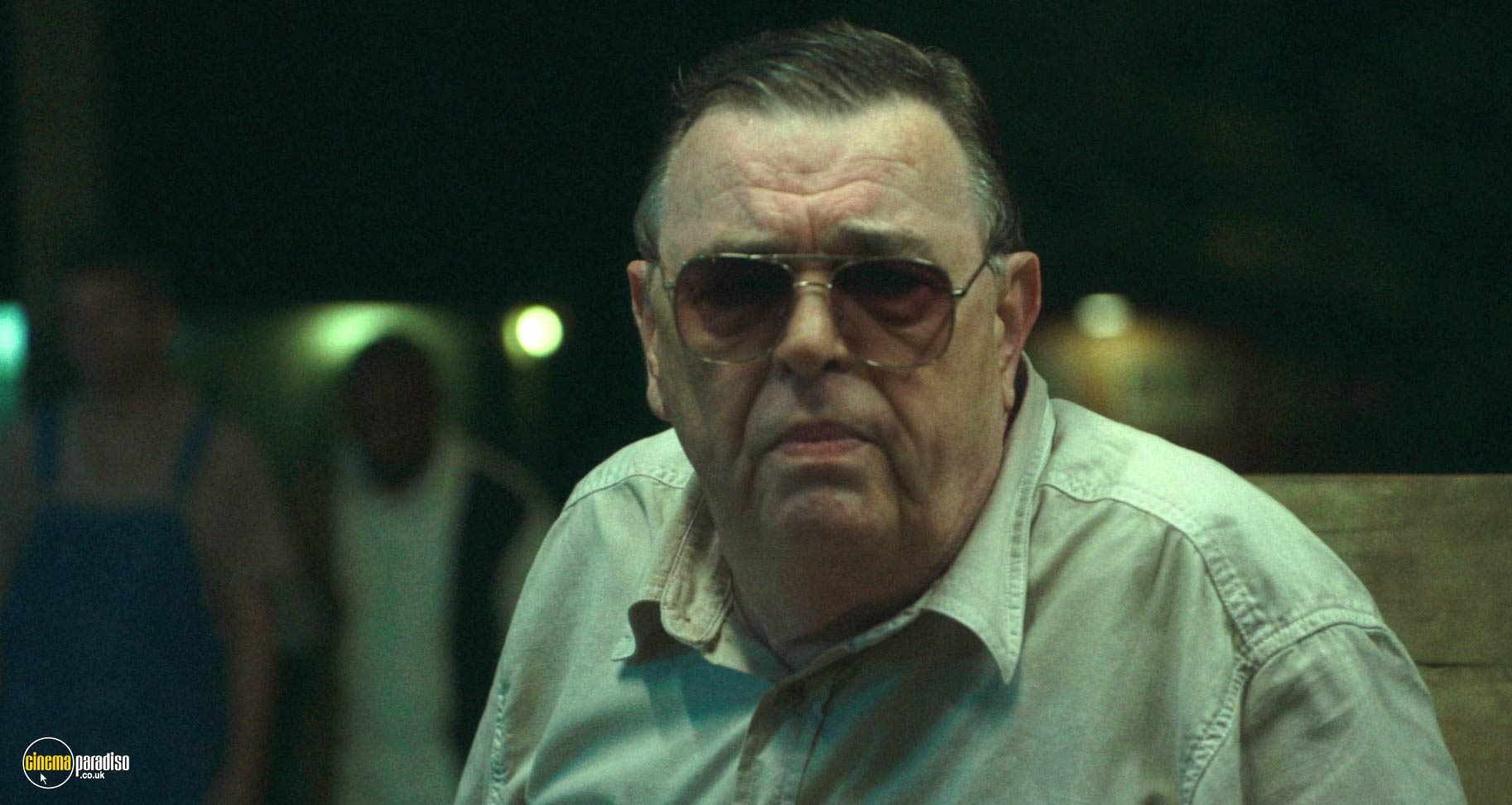 Play trailer1h 35minPlay trailer1h 35min
Play trailer1h 35minPlay trailer1h 35minOne to watch in a double bill with Sean Durkin's Mary Marcy May Marlene (2011) or Malgorzata Szumowska's The Other Lamb (2019), Ti West's found footage thriller draws on the infamous massacre within the Jonestown cult community in 1978. VICE reporter Sam (A.J. Bowen) and cameraman Jake (Joe Swanberg) talk fashion photographer Patrick (Kentucker Audley) into letting them tag along when his sister, Caroline (Amy Seimetz), invites him to visit her at the commune run by Charles Anderson Reed (Gene Jones), who is known to his acolytes as Father.
- Director:
- Ti West
- Cast:
- Joe Swanberg, AJ Bowen, Kentucker Audley
- Genre:
- Thrillers, Horror
- Formats:
-
-
Midsommar (2019)
 Play trailer2h 21minPlay trailer2h 21min
Play trailer2h 21minPlay trailer2h 21minJust as Paul Giovanni's songs helped establish the atmosphere on Summerisle, so the Nordic folk-inspired score composed by Bobby Krlic (aka The Haxan Cloak) sets the tone in the Swedish commune hosting Ari Aster's horror. The action shifts deftly between human drama and eerie suspense, as psychology student Dani Ardor (Florence Pugh) hopes to come to terms with her bipolar sister's murderous suicide and patch up her deteriorating romance with cultural anthropologist boyfriend Christian (Jack Reynor), when her friend, Pelle (Vilhelm Blomgren), invites her to the Hårga festival, which is only held once every 90 years.
- Director:
- Ari Aster
- Cast:
- Florence Pugh, Linnea Larsdotter, Jack Reynor
- Genre:
- Thrillers, Horror
- Formats:
-










































